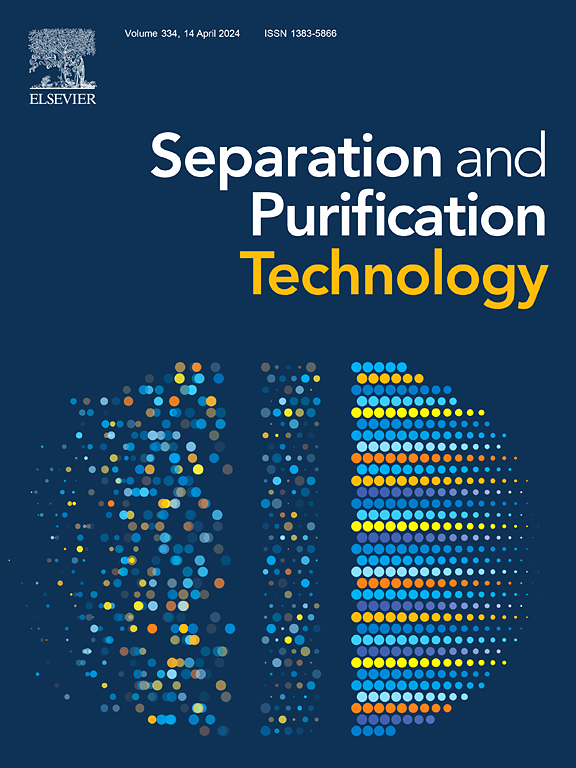Enhanced water purification through the double regulation of GO/MXene membranes with sodium alginate and KOH
IF 8.1
1区 工程技术
Q1 ENGINEERING, CHEMICAL
引用次数: 0
Abstract
Graphene oxide (GO) and MXene-based membranes have been widely used in the field of water purification due to their excellent separation properties. However, the poor stabilities of these species in water and the ‘trade-off’ effect between permeability and retention greatly limit their practical applications. In this study, modified GO/MXene composite membranes were prepared via double regulation with sodium alginate (SA) and KOH. During the modulation process, SA formed more hydrogen bonds with GO/MXene nanosheets. Meanwhile, SA acts as a “mortar” during the assembly of GO/MXene nanosheets, avoiding their aggregation and disordered stacking. During the subsequent regulation in the KOH solution, K+ not only enlarged the interlayer spacing of the composite membrane, but also interacted with the oxidation groups on the GO (cation-π) to play a fixed role in fixing the interlayer spacing of the composite membrane to reduce the swelling of the composite membrane. Furthermore, the number of oxygen-containing functional groups on the surfaces of the GO/MXene composite membranes was significantly reduced under alkaline conditions, which further enhanced the selectivity of the composite membranes to the selectivity of the composite membrane to the dye molecules. Due to the synergistic effect generated by the dual regulation of SA and KOH, the K+/GO/MXene composite membranes exhibited excellent water treatment performance, in terms of their permeability and dye retention, as well as high physical stability. By optimizing the content of SA and the ratio of GO/MXene, the composite membrane with the optimal separation performance was successfully synthesized. Compared with ordinary GO/MXene composite membranes, the water flux of the K+/GO/MXene-SA composite membrane was enhanced from 48 to 88.07 Lm−2 h−1 bar−1.The K+/GO/MXene-SA composite membrane has excellent MB dye separation performance, with a removal rate of more than 97.75 %. In addition, the K+/GO/MXene-SA composite membrane demonstrated an excellent structural stability in acidic and alkaline solutions. The filtered composite membrane still maintains excellent stability and has good recyclability after desorption.These results therefore provide new insights into the design of two-dimensional membrane separation materials for use in the purification of dye effluents.求助全文
约1分钟内获得全文
求助全文
来源期刊

Separation and Purification Technology
工程技术-工程:化工
CiteScore
14.00
自引率
12.80%
发文量
2347
审稿时长
43 days
期刊介绍:
Separation and Purification Technology is a premier journal committed to sharing innovative methods for separation and purification in chemical and environmental engineering, encompassing both homogeneous solutions and heterogeneous mixtures. Our scope includes the separation and/or purification of liquids, vapors, and gases, as well as carbon capture and separation techniques. However, it's important to note that methods solely intended for analytical purposes are not within the scope of the journal. Additionally, disciplines such as soil science, polymer science, and metallurgy fall outside the purview of Separation and Purification Technology. Join us in advancing the field of separation and purification methods for sustainable solutions in chemical and environmental engineering.
 求助内容:
求助内容: 应助结果提醒方式:
应助结果提醒方式:


